gluten free sourdough bread
Gluten free sourdough bread is a delightful, easy-to-make recipe that results in a fluffy loaf perfect for sandwiches or toasts. With just a few hours of letting the dough rise, this gluten free sourdough bread brings a touch of homemade goodness to your kitchen.
Every time I bake gluten free sourdough bread, I remember those Saturday mornings spent with my daughters, laughing and learning together in our cozy kitchen. It reminds me of baking together little treats, like Sourdough Cinnamon Roll Focaccia, as we share stories and create lasting memories.
Why You’ll Love This Gluten free sourdough bread
Easy to prepare
Making gluten free sourdough bread is straightforward, ensuring you can enjoy a warm loaf without spending all day in the kitchen.
Fluffy texture
This gluten free sourdough bread boasts a soft, airy texture that is satisfying and enjoyable with any meal.
Natural fermentation
Thanks to the sourdough starter, gluten free sourdough bread is naturally fermented, giving it a depth of flavor that elevates any dining experience.
Versatile ingredient
You can use gluten free sourdough bread for a variety of dishes, from toast topped with fresh avocado to classic sandwiches.
Healthy option
This gluten free sourdough bread is a wholesome alternative, suitable for those seeking gluten-free options without compromising on taste and texture.
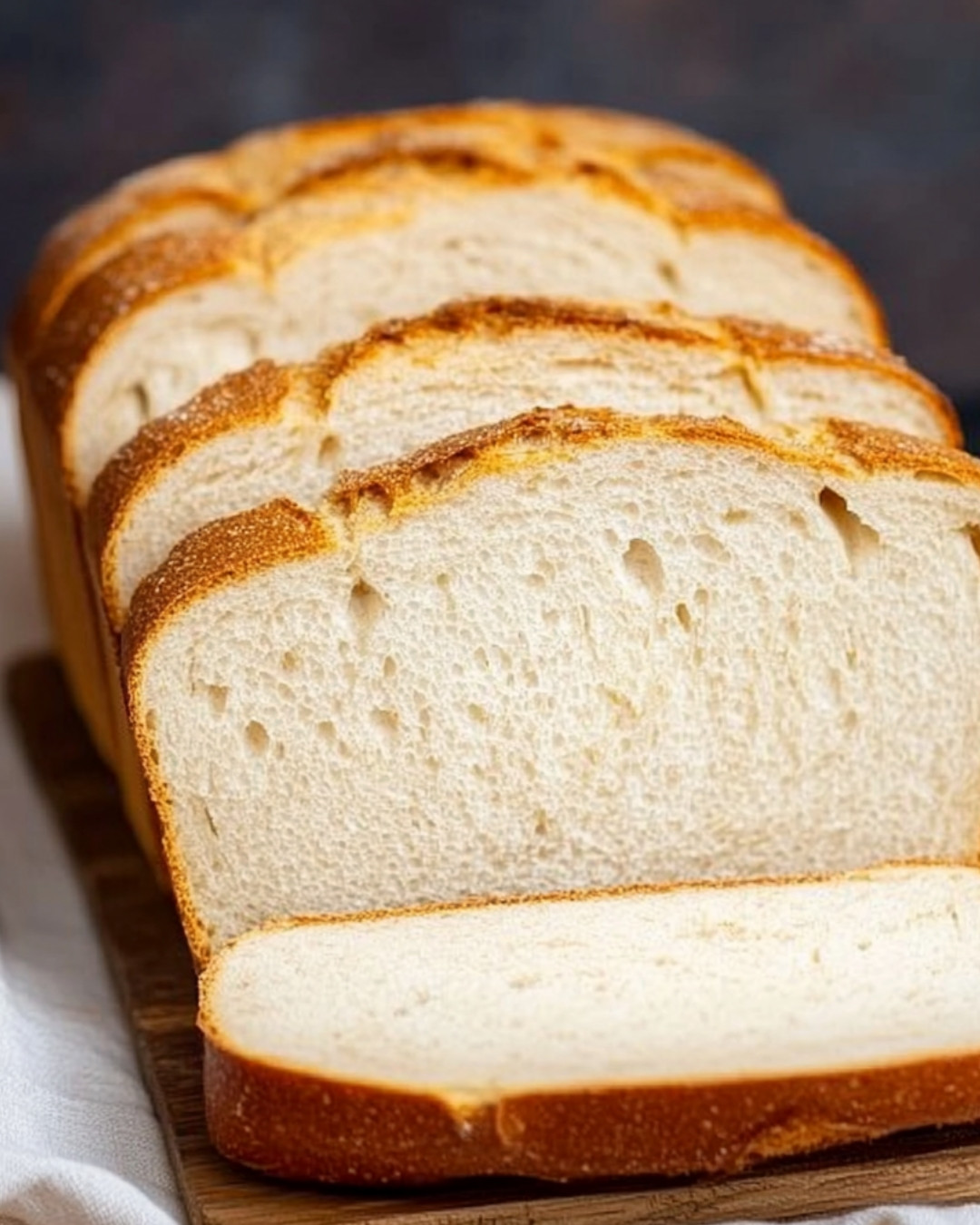
Step-by-Step Cooking Instructions
- Step 1: Prepare the Sourdough Starter
Begin by feeding your sourdough starter a few hours before you plan to bake. This helps to ensure that it’s active and bubbly, ready to work its magic in your gluten free sourdough bread. - Step 2: Mix the Dry Ingredients
In a large mixing bowl, combine your gluten free all-purpose flour, salt, and any additional dry ingredients. Stir them together to ensure even distribution. - Step 3: Combine with the Starter
Add the active sourdough starter to the bowl with the dry ingredients. Slowly mix in the water, allowing the mixture to come together into a soft dough. Don’t worry if it looks a little loose; this is part of the charm of gluten free sourdough bread. - Step 4: Knead the Dough
Use your hands or a dough scraper to knead the dough lightly in the bowl. The texture should be slightly tacky but manageable, ensuring all ingredients are well combined. - Step 5: Let it Rise
Cover the bowl with a damp towel or plastic wrap and let the dough rise in a warm spot for several hours or until it has visibly grown in size. This step is crucial for developing flavor. - Step 6: Shape the Loaf
Once risen, gently deflate the dough and turn it out onto a floured surface. Shape it into a loaf or place it into a greased loaf pan, making sure to maintain the structure of the dough. - Step 7: Second Rise
Cover the shaped loaf again and let it rise for another hour. This final rise will give your gluten free sourdough bread its wonderful texture. - Step 8: Preheat the Oven
While the dough is rising, preheat your oven to the required temperature. A properly heated oven helps to achieve the perfect crust on your bread. - Step 9: Bake the Bread
Once preheated, carefully place the loaf in the oven. Bake until golden brown and the bread sounds hollow when tapped on the bottom, which indicates it is done. - Step 10: Cool Before Slicing
After baking, remove the bread from the oven and let it cool completely on a wire rack before slicing. This step allows the flavors and textures to set beautifully.
Notes
- Tip 1: Choose Quality Flour
Using a good gluten free all-purpose flour blend can greatly affect the outcome of your gluten free sourdough bread. - Tip 2: Proper Rising Conditions
A warm, draft-free environment is ideal for rising. If your kitchen is cool, consider placing the dough in the oven with just the light on to create a cozy space. - Tip 3: Use a Food Scale
For consistent results, measuring your flour by weight is more accurate than using volume alone. - Tip 4: Patience is Key
Gluten free sourdough bread can take longer to rise than traditional bread, so give it that extra time for the best flavor.
gluten free sourdough bread – A Closer Look
This recipe for gluten free sourdough bread is more than just a way to satisfy a dietary need; it’s about recreating the warmth and comfort that fresh bread brings into our lives. The process of nurturing your sourdough starter, watching it bubble and grow, feels like cultivating a friend in the kitchen. The dough’s texture, once baked, offers a beautiful crust that cracks open to reveal a soft and airy interior. Each bite carries with it a hint of tanginess from the fermentation process, reminding us that good things take time.
Bringing It to Your Kitchen
Imagine the enticing aroma of freshly baked gluten free sourdough bread wafting through your home, calling family and friends to gather around the kitchen table. This bread is perfect for weekend brunches with your loved ones, slathered with butter and homemade jam, or served alongside a warm bowl of soup on a chilly evening. It brings people together, fueling not just the body but also the heart, with the promise of shared stories and laughter over each slice.
Common Mistakes to Avoid
One common mistake when making gluten free sourdough bread is not allowing enough rise time. Gluten free dough can be slow to rise, and cutting this time short can lead to dense bread. Additionally, ensure that your oven is fully preheated to the right temperature before placing the loaf inside; this step is crucial for achieving the perfect crust. Finally, be mindful of ingredient ratios; too much flour or water can affect the dough’s consistency and baking outcome.
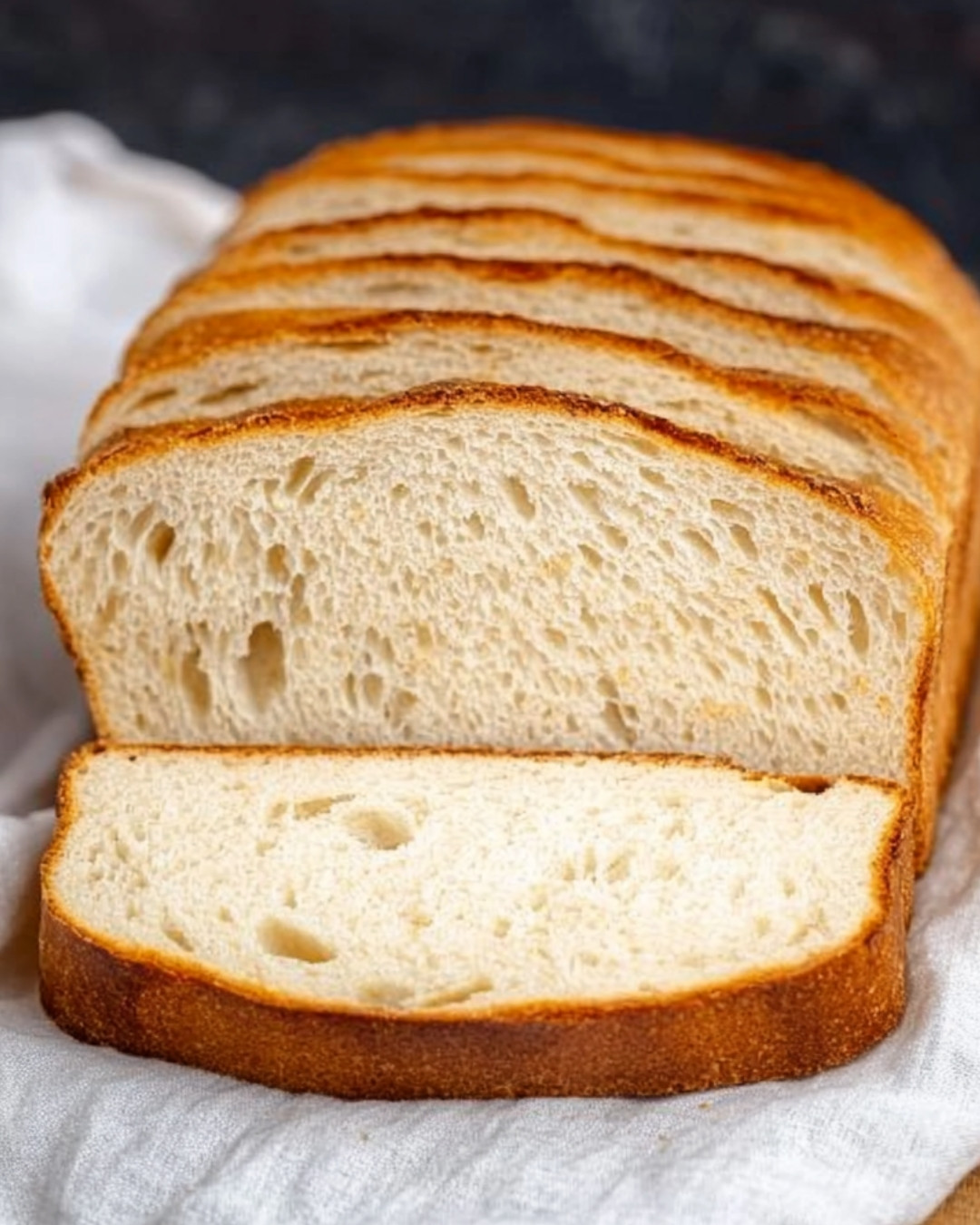
Cook Techniques
Preparing the Starter
- Begin by combining equal parts of gluten free flour and water in a jar. Stir until smooth.
- Cover the jar loosely and let it sit at room temperature for 24 hours.
- Feed the starter every day with fresh flour and water, discarding half before adding new ingredients.
- In about 5-7 days, your starter will be bubbly and ready for baking.
Mixing the Dough
- In a large mixing bowl, combine the bubbly starter with more gluten free flour, water, salt, and any optional ingredients.
- Stir until all ingredients are combined, forming a shaggy dough.
- Let the dough rest for about 30 minutes to an hour, allowing it to hydrate.
Shaping and Proofing
- After resting, turn the dough out onto a lightly floured surface.
- Gently shape the dough into a ball, tucking the edges under.
- Place it in a proofing basket and cover it to prevent drying out. Allow it to proof for several hours or overnight in the fridge.
Baking the Bread
- Preheat the oven and a Dutch oven to 450°F (230°C) for 30 minutes.
- Carefully transfer the dough into the hot Dutch oven, ensuring the seam side is facing up.
- Cover with the lid and bake for 30 minutes covered, then 15-20 minutes uncovered until golden and crusty.
- Let the bread cool on a rack for at least an hour before slicing.
Serving and Presentation Ideas
Rustic Bread Board
Slice your gluten free sourdough bread and arrange it on a rustic wooden board. Add a selection of cheeses, cured meats, and fresh fruits for an inviting charcuterie experience.
Toast Toppings
Serve toasted slices of gluten free sourdough bread with avocado, poached eggs, and sprinkle with chili flakes or fresh herbs for a delicious brunch option.
Gourmet Sandwiches
Craft gourmet sandwiches with your gluten free sourdough bread, layering roasted vegetables, fresh pesto, and gooey cheese to impress your guests at any gathering.
Conclusion
The gluten free sourdough bread offers a delightful blend of tangy and nutty flavors with a crispy crust and chewy interior. It’s perfect to serve on special occasions like weeknight dinners or festive gatherings.
This simple recipe highlights the effortless preparation, combining, kneading, and baking that yields stunning results. The aroma of freshly baked gluten free sourdough bread fills the kitchen, inviting everyone to gather around. You’ll also love our banana bread. Impress your guests with this artisan-style bread that feels restaurant-worthy right at home.
For more delicious recipes and cooking inspiration, follow me on Facebook and Pinterest!
People Also Ask :
Can sourdough bread be gluten-free?
Yes, it can! Gluten free sourdough bread is made with gluten free flours and requires a gluten free starter.
Which gluten free flour is best for sourdough?
A blend of gluten free flours like rice flour, sorghum, and tapioca works best for creating a tasty sourdough flavor
Can you buy sourdough gluten-free?
Many bakeries and specialty stores offer gluten free sourdough bread, but making it at home is always an option.
Why is my gluten-free sourdough bread so dense?
Dense gluten free sourdough can be caused by insufficient hydration, underproofing, or using a heavy flour alone.
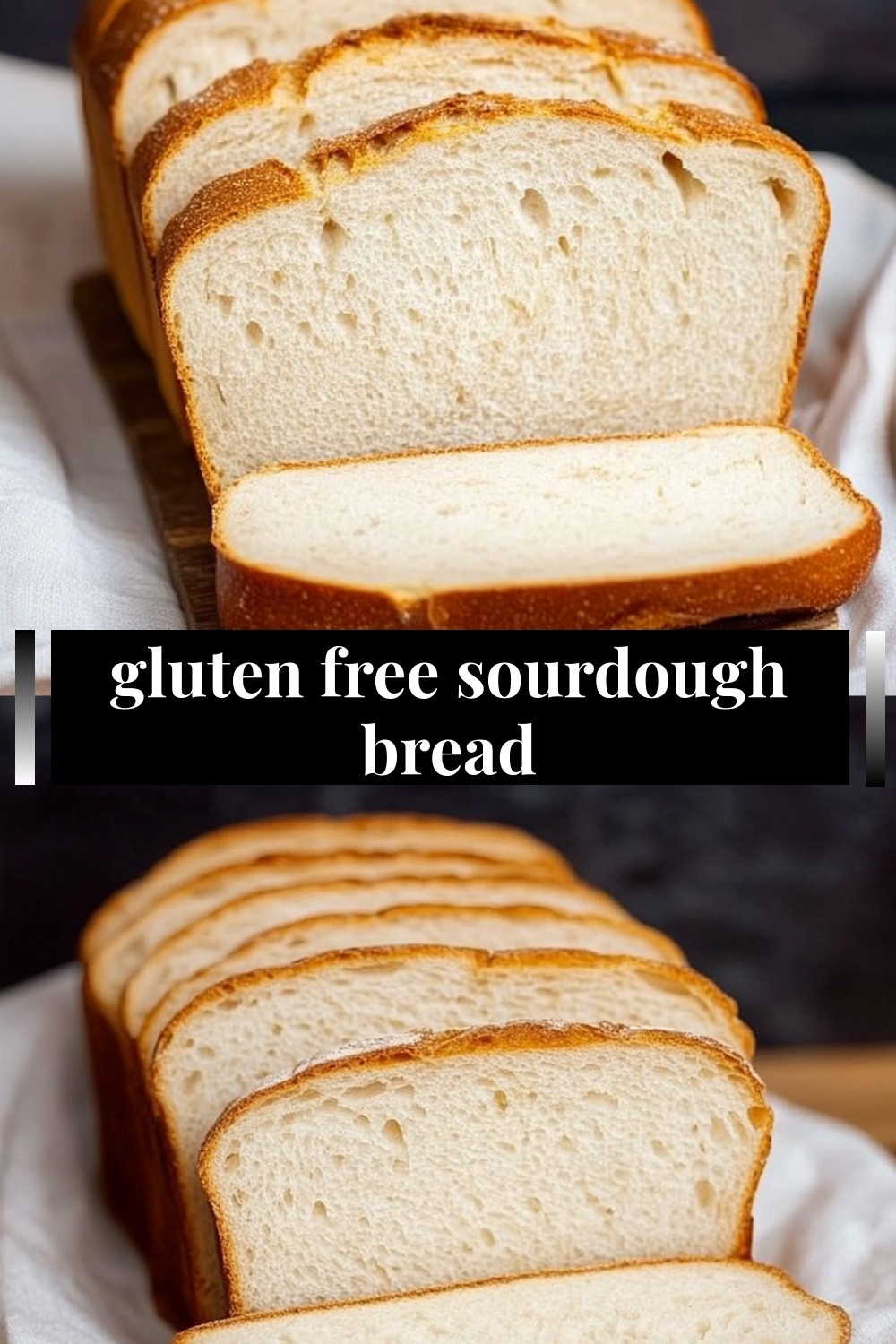
gluten free sourdough bread
Craving homemade bread without gluten? Discover the perfect gluten free sourdough bread that is soft inside with a delightful crust. This easy-to-follow recipe brings traditional sourdough joy to everyone. Whether you’re gluten-intolerant or simply exploring new flavors, this is your go-to guide for a delicious loaf. Click to uncover the secret to this satisfying and simple creation!
- Prep Time: 15 minutes
- Cook Time: 60 minutes
- Total Time: 4 hours 15 minutes
- Yield: 1 loaf 1x
Ingredients
- 3 cups (420 g) all purpose gluten free flour blend (See Recipe Notes)
- 3 teaspoons xanthan gum, omit if your blend already contains it
- 9 tablespoons (68 g) tapioca starch/flour
- 2 tablespoons (25 g) granulated sugar
- 1 ½ teaspoons (9 g) kosher salt
- ¾ cup (165 g) gluten free wild yeast sourdough starter, fed within previous 12 hours (See Recipe Notes)
- 1 ½ cups (12 fluid ounces) warm milk, (about 95°F), plus more by the tablespoon
- 4 tablespoons (56 g) unsalted butter, at room temperature
- Melted butter, for brushing on top to help browning (optional)
Instructions
Step 1: Prepare the Sourdough Starter
Begin by feeding your sourdough starter a few hours before you plan to bake. This helps to ensure that it’s active and bubbly, ready to work its magic in your gluten free sourdough bread.
Step 2: Mix the Dry Ingredients
In a large mixing bowl, combine your gluten free all-purpose flour, salt, and any additional dry ingredients. Stir them together to ensure even distribution.
Step 3: Combine with the Starter
Add the active sourdough starter to the bowl with the dry ingredients. Slowly mix in the water, allowing the mixture to come together into a soft dough. Don’t worry if it looks a little loose; this is part of the charm of gluten free sourdough bread.
Step 4: Knead the Dough
Use your hands or a dough scraper to knead the dough lightly in the bowl. The texture should be slightly tacky but manageable, ensuring all ingredients are well combined.
Step 5: Let it Rise
Cover the bowl with a damp towel or plastic wrap and let the dough rise in a warm spot for several hours or until it has visibly grown in size. This step is crucial for developing flavor.
Step 6: Shape the Loaf
Once risen, gently deflate the dough and turn it out onto a floured surface. Shape it into a loaf or place it into a greased loaf pan, making sure to maintain the structure of the dough.
Step 7: Second Rise
Cover the shaped loaf again and let it rise for another hour. This final rise will give your gluten free sourdough bread its wonderful texture.
Step 8: Preheat the Oven
While the dough is rising, preheat your oven to the required temperature. A properly heated oven helps to achieve the perfect crust on your bread.
Step 9: Bake the Bread
Once preheated, carefully place the loaf in the oven. Bake until golden brown and the bread sounds hollow when tapped on the bottom, which indicates it is done.
Step 10: Cool Before Slicing
After baking, remove the bread from the oven and let it cool completely on a wire rack before slicing. This step allows the flavors and textures to set beautifully.
Notes
Tip 1: Choose Quality Flour
- Using a good gluten free all-purpose flour blend can greatly affect the outcome of your gluten free sourdough bread.
Tip 2: Proper Rising Conditions
- A warm, draft-free environment is ideal for rising. If your kitchen is cool, consider placing the dough in the oven with just the light on to create a cozy space.
Tip 3: Use a Food Scale
- For consistent results, measuring your flour by weight is more accurate than using volume alone.
Tip 4: Patience is Key
- Gluten free sourdough bread can take longer to rise than traditional bread, so give it that extra time for the best flavor.
Nutrition
- Serving Size: 1slice
- Calories: 265 kcal
- Sugar: 4g
- Sodium: 412mg
- Fat: 6g
- Saturated Fat: 4g
- Fiber: 2g
- Protein: 3g

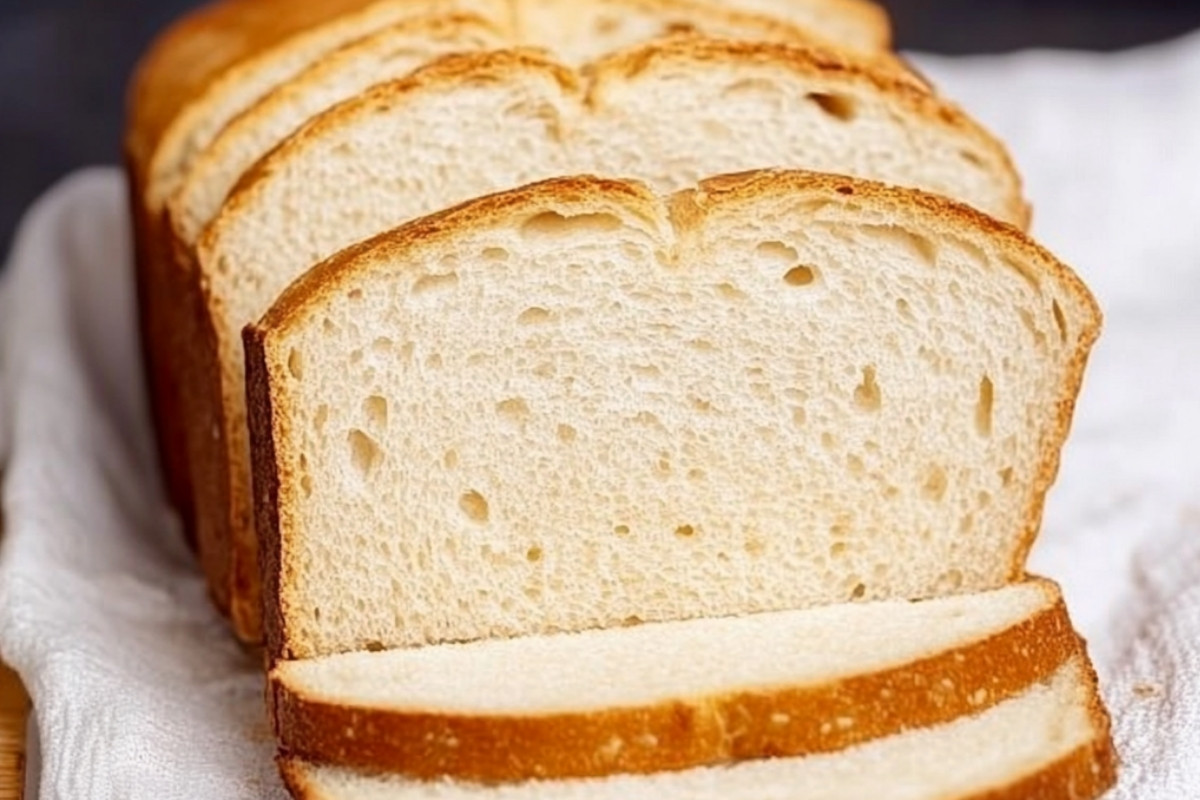
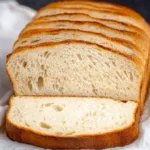





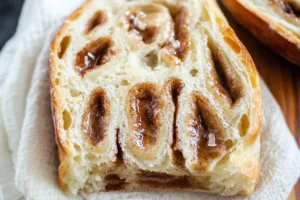

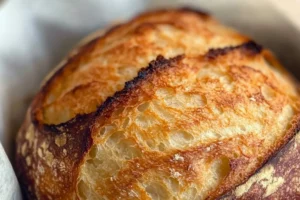

5 thoughts on “Gluten Free Sourdough Bread”
Comments are closed.